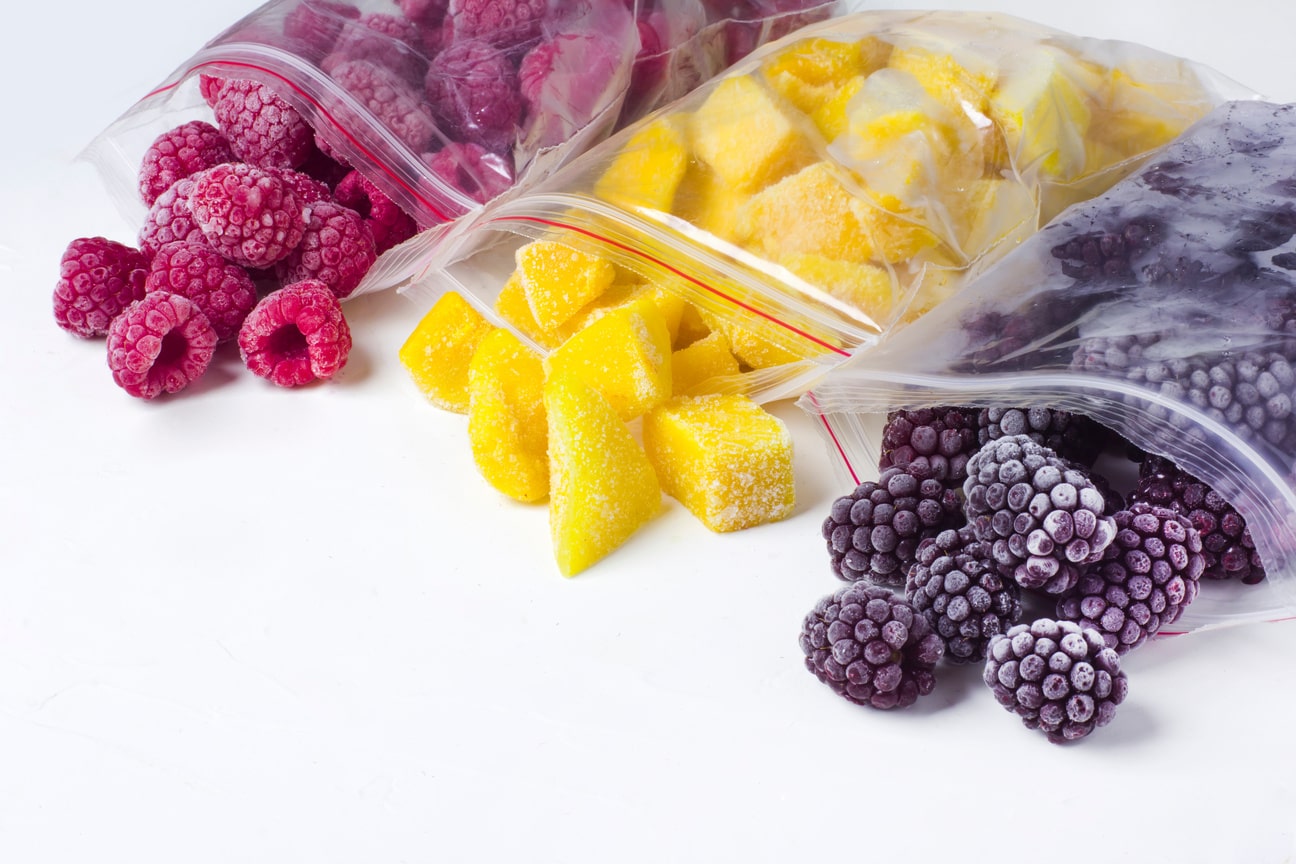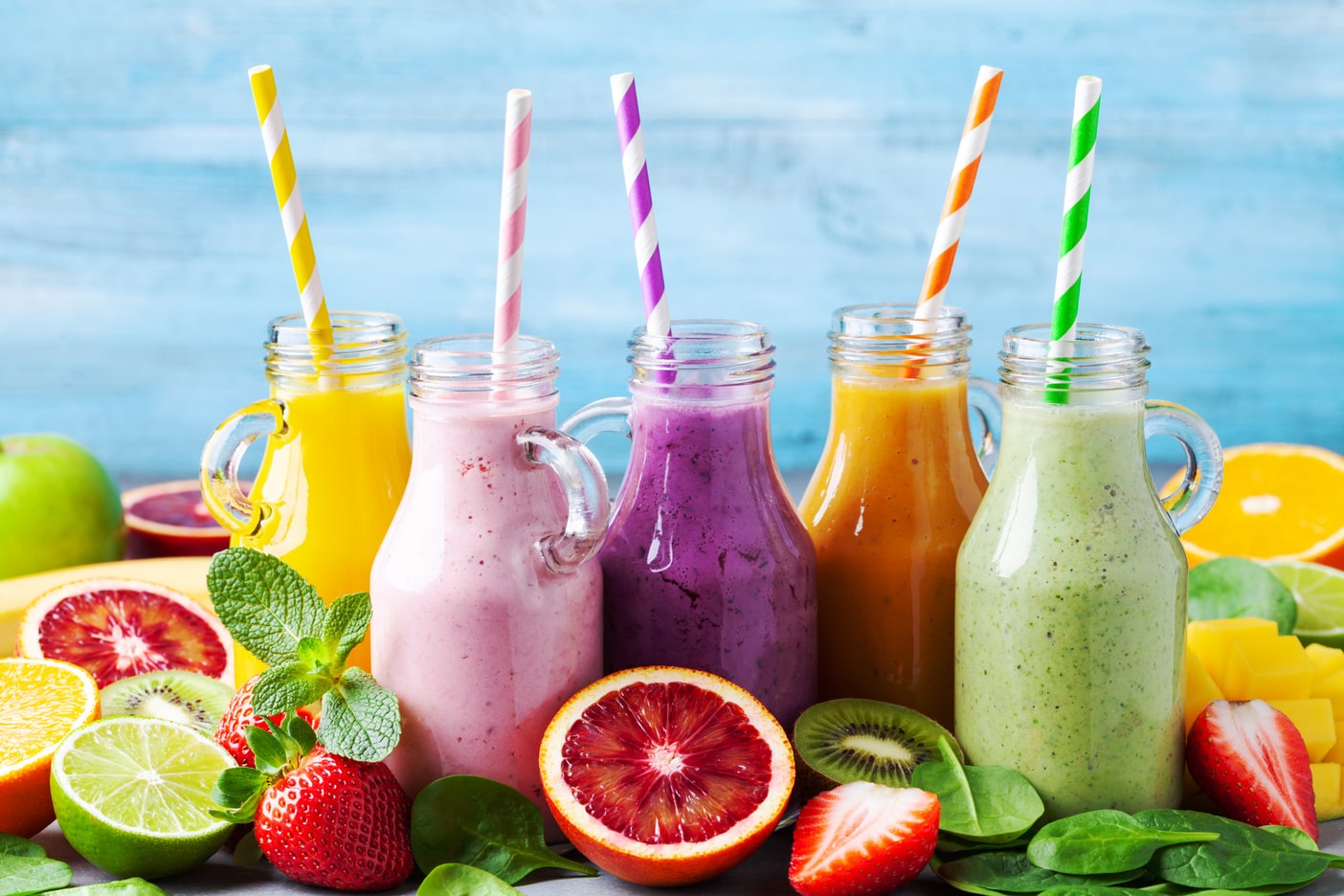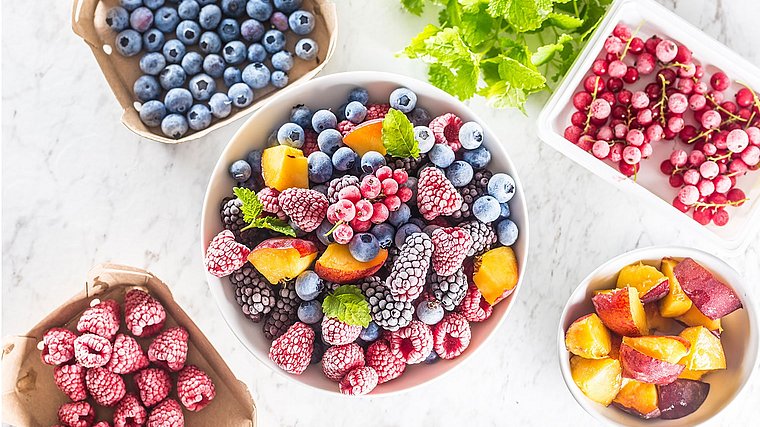The World Health Organisation recommends a daily intake of at least 400 g of fruit and vegetables*, to prevent a wide range of diseases, including cardiovascular diseases. While we don’t usually have a problem with that in the spring and summer time, it might be more difficult to cover that intake in the winter when the availability of seasonal fruits and vegetables is lower. During the cold months, we can use first and foremost root vegetables (for example, carrots, parsley), cruciferous vegetables (brussels sprouts, kale or cabbage) or bulb vegetables. As for fruits, we can eat pears or apples. It is certainly recommended to base your diet on seasonal- and local produce – it is also the most environmentally-friendly option; however, you don’t always have the time or opportunity to make roasted brussels sprouts or cabbage (they are also bloating, so they are not for everyone). There are also fruits which should be on our menu, regardless of the season, e.g. berries (strawberries or raspberries) which are a source of many nutritious bioactive compounds. In such a case, frozen products are a good option.
Good frozen foods – what does it mean?
Freezing is the best method to preserve vegetables and fruits as long as it is done correctly. Before the products get frozen, they are blanched; blanching inactivates enzymes that would otherwise cause the product aging (deterioration in colour and texture or flavour). The process also prevents the development of bacteria (though it does not kill them, which is worth keeping in mind). Furthermore, only ripe fruits and vegetables which have the highest content of vitamins and minerals are frozen. When freezing is done properly, you can preserve a high quality of such products for more than 6 months.

Myths about frozen food
Although there are many myths about the quality and nutritional value of frozen fruits and veggies, it is worth underlining that they are just as valuable** as their fresh counterparts, and in some cases, they are even healthier. Take, for example, vegetables and fruits sitting out in the sun for hours at the fruit and veggie stall. Oxygen and sun rays lead to considerable loss of many nutritional substances; they also accelerate the aging reactions. And while one can argue about the flavour of fresh and frozen produce – as long as they have been frozen properly, the latter will be more valuable than the fresh produce that has been stored improperly.
Frozen food can be stored longer because it contains added preservatives – this is another myth. A very low temperature is absolutely enough to preserve the desirable flavour and nutritional value. However, it is worth paying attention to how we thaw the products. As a rule, the shorter, the better and that holds true for two reasons. First of all, a longer thawing process (for example, at room temperature) means that bacteria can develop better, as freezing does not guarantee microbiological safety – it only inactivates bacteria; when the temperature conditions are right, they can keep growing. Secondly, the longer the thawing process, the higher the losses of nutritional values – hence, it is a good idea to thaw fruits and veggies fast, for example, by direct thermal processing or by leaving a product to thaw in the fridge (particularly fruits, e.g. cherries or strawberries).
Eat yourself healthy!
Frozen food is undoubtedly a useful solution for busy people who want to prepare a tasty and nutritious meal in a short time. What is more, as frozen fruits and vegetables are more available, we can actually increase their consumption throughout the day. According to research published*** in the Nutrients magazine, consumers of frozen fruits and vegetables actually eat more fruits and veggies than people who eat fresh produce only, and that translates into the nutritional value of their diet as well as a higher intake of vitamins, minerals or fiber.
Whether you choose fresh or frozen fruits and veggies, you provide your body with valuable bioactive compounds and polyphenols that have anti-oxidant and anti-inflammatory properties. If you rely on seasonal and local produce in your diet, please keep in mind that it can be supplemented by frozen fruits and veggies all year round.

Try these three delicious recipes with frozen fruits:
Smoothie with frozen cherries
- 2 servings
- 8 dates
- 150 g frozen cherries
- 2 handfuls of spinach
- ½ apple
- 1 glass of water
- Cocoa and/or protein powder – optional
Method: Pour some hot boiling water on the dates and leave for 5 minutes. Mix all the ingredients until smooth. Add some water if the smoothie is too thick. You can also add some protein powder and/or cacao but it is optional.
Hot quinoa with strawberries
- 50g quinoa
- 150g frozen strawberries
- 1 glass unsweetened almond milk
- 1 tablespoon chia seeds
- ½ handful of almonds
- Cinnamon for flavour
Method: Rinse the quinoa in a strainer and boil it with almond milk. At the end of boiling, add chia seeds (or flaxseed) and frozen strawberries. Put a lid on the pot and leave for a moment. Chop some almonds. Put the quinoa into a bowl, sprinkle it with the chopped almonds and cinnamon.
Avocado smoothie
- ½ avocado
- ½ banana
- 1 glass frozen strawberries
- ¾ glass frozen raspberries
- 1-2 handfuls of spinach
- 1 tablespoon chia seeds
- Water
Method: mix all the ingredients with some water until smooth. If the mixture is too thick, pour some water. Optionally, add a measure cup of protein powder.
*https://www.who.int/news-room/fact-sheets/detail/healthy-diet
**https://pubmed.ncbi.nlm.nih.gov/29290348/
***https://pubmed.ncbi.nlm.nih.gov/25526594/
****https://pubmed.ncbi.nlm.nih.gov/30595028/
